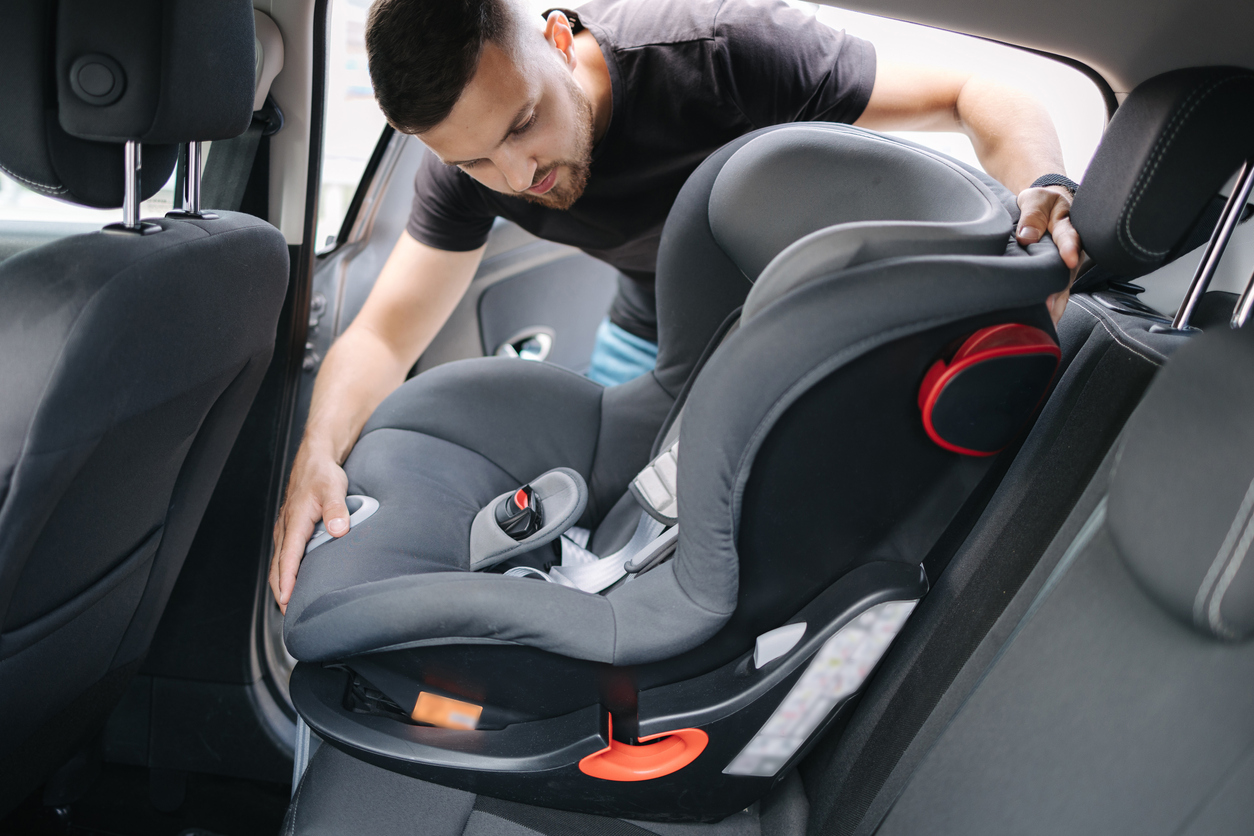January 21, 2022 | Oklahoma Law

Unintentional injury is the leading cause of death for children between the ages of one and 14. A large majority of these injuries come from car accidents. Although these facts are distressing, they aren’t entirely surprising.
Car accidents can be devastating for any person. Naturally, vulnerable infants, children, and preteens are at even higher risk for injury and emotional consequences after a wreck.
The good news is that car and booster seats are proven to reduce the risk of serious injury. In fact, car seats reduce the risk of fatal injury by 54% for toddlers and 71% for infants.
The only question is: how do you know which car seat is best for your child? And how do you ensure that the system is installed and used correctly?
A good place to start is the state’s car and booster seat laws. In this post, you’ll find everything you need to know about how Oklahoma laws protect its most vulnerable citizens.
Car and Booster Seat Laws by Age
According to Oklahoma state guidelines, all children (regardless of age) are safest in the back seat. They should be buckled in age-appropriate restraints at all times. Below, we’ve outlined the legal requirements for car and booster seats, according to the age of the child:
0-2 Years of Age
In Oklahoma, infants and children under two must be in a rear-facing car seat. These seats are specifically designed to protect small, vulnerable infants who weigh 22 pounds or less.
As mentioned, these seats should always be used in the rear seats of a vehicle. And as the name suggests, rear-facing car seats should be positioned so that the child is facing the rear of the vehicle.
Most often, these car seats have a base that stays in the car. The actual seat carrier can be moved in and out of the vehicle conveniently and can sometimes even be snapped into a matching stroller.
2-4 Years
Under Oklahoma law, the only requirement for two to four-year-olds is that they remain in a car seat while they are in the vehicle. The law says the child should be kept rear-facing until they reach two or meet the manufacturer’s weight and height recommendations for the seat, whichever occurs first. Most car seat resources will tell you to keep your young child rear-facing for as long as possible.
From there, the next step up is what’s called the convertible car seat. These seats are so named because they can be used by both infants and toddlers.
Once rear-facing seats are no longer feasible, a convertible car seat can be turned around. These seats are often able to hold a child up to 40 pounds.
4-8 Years
Many parents make the mistake of assuming that legal requirements end with car seats. But that is not true in the state of Oklahoma. Once a child has outgrown their convertible car seat, it is time to move to a booster seat.
If your child is younger than 8 and shorter than 4’9”, a booster seat is legally required. These products are always meant to be used in a forward-facing manner. They can typically hold a child up to 80 pounds.
8 Years and Older
Once your child has outgrown the booster seat, the only requirement is that they wear a seat belt while traveling. Of course, seat belts are proven to save lives. In fact, nearly 50% of all car accident fatalities involve people who are not wearing a seat belt.
Oklahoma’s Mandatory Seat Belt Use Act permits police officers to stop drivers who are not wearing a seat belt. If you find yourself in this situation, you can expect to pay at least a minor fine.
Now that you better understand the car and booster seat laws of Oklahoma, you can move forward in a way that keeps your child safe.
Contact the Oklahoma City Car Accident Lawyers at McGuire Law Firm Today for Free Consultation
For more information, please contact the Oklahoma City car accident law firm of McGuire Law Firm at our nearest location to schedule a free consultation today.
We serve throughout Oklahoma and its surrounding areas:
McGuire Law Firm – Edmond
200 E 10th Street Plaza
Edmond, OK 73034
United States
(405) 513-5658